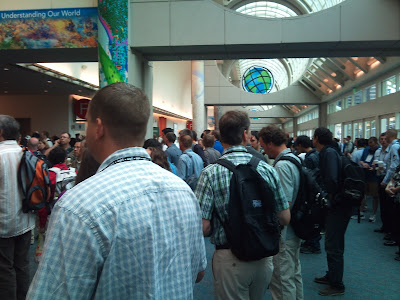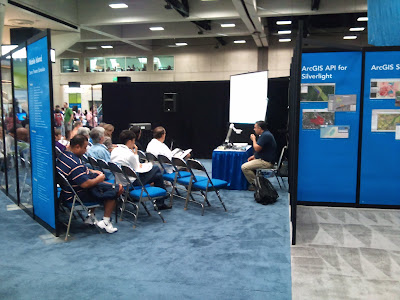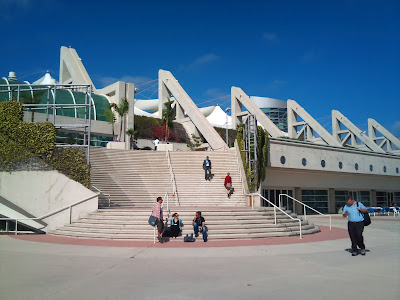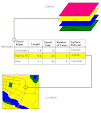
Attended the Esri International User Conference in San Diego July 10-15. It was awesome. Production values very high. It was like a theme park for geographic information systems. There were about 30 tracks, including technical workshops and paper sessions, plus short demos on the exhibit floor.

Oh, and did I mention the technical support staff that would sit down with you one-on-one and solve your problems? There was also an area where you could sit down and do a 20-minute hands-on training session.
I made some new contacts and learned the bits I was missing during the technical workshops.
The social event was a food, music and museum night at Balboa Park, where most of the museums were open for us alone. Had a great time at the San Diego Art Museum, and loved the jazz ensemble at the open air theater.

I was staying at a hotel just down the street from the conference center, and walked down the sidewalk by the harbor each day to get there. The conference center is built a little like a cruise ship - decks on every side, and glass walls and ceilings.

The temperature was between 62 and 72 the whole time I was there, which was a great vacation from the near 100's I left at home. The hot tub jets at the hotel massaged my aching feet every night, and made it possible for me to walk miles again the next day. I could attend this conference every year, and never get tired of it.



